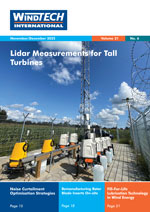JenaBatteries and BASF are cooperating in the production of an electrolyte for a battery technology that is particularly suitable for stationary storage of electricity from renewable energy sources and for stabilising conventional transmission grids.
JenaBatteries has developed this technology based on a so-called redox flow battery (RFB) with organic materials. Two liquid organic electrolytes separated by a membrane and stored in separate tanks store the current. BASF will supply one of the two electrolytes as part of the collaboration. JenaBatteries plans to market the first RFB in 2020.
RFBs store electrical energy in chemical compounds. The two reaction partners are present in dissolved form and circulate in two separate circuits. The ion exchange between the two energy-storing electrolytes takes place through a membrane in the galvanic cell. Here the chemical reduction or oxidation of the dissolved substances takes place. Electrical energy is absorbed during charging and released during discharging. The size of the connected and scalable tanks is the determining factor for the capacity of the RFB. They are therefore suitable for use as large-format, stationary energy storage units with a capacity of 100 kilowatts and above and a capacity of 400 kilowatt hours and above. With a high degree of flexibility, RFBs enable particularly high outputs of several hundred megawatts and capacities in the range of gigawatt hours. RFB do not contain any flammable or explosive substances and they can be charged over 10,000 times.










